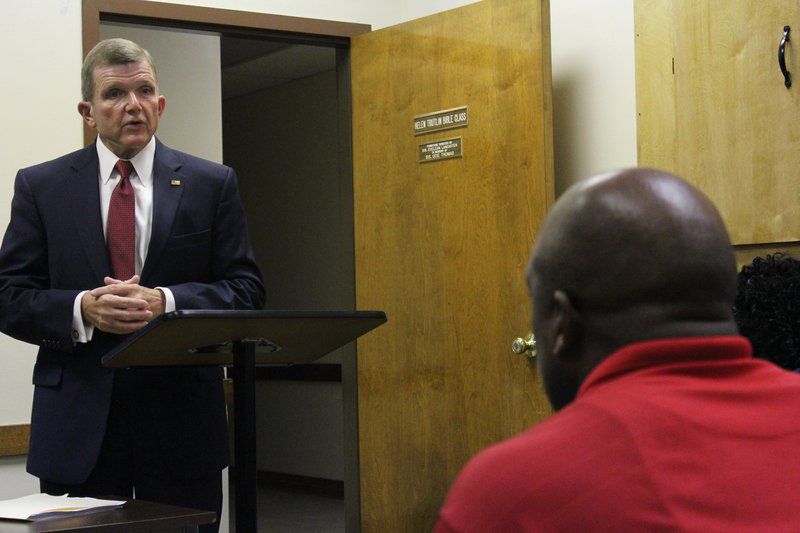DA explains legal process for officer-involved shooting
Published 4:00 pm Friday, September 1, 2017

- Jordan Barela/Times-Enterprise Southern Judicial Circuit District Attorney Brad Shealy, left, discusses the legal process following an officer-involved shooting.
THOMASVILLE — The Southern Judicial Circuit district attorney informed community members Thursday night of the legal process regarding an officer-involved shooting.
Brad Shealy, along with Senior Assistant District Attorneys Jim Prine and Ray Auman, explained to those at First Missionary Baptist Church how the officer-involved shooting that occurred more than two weeks ago would be conducted with a grand jury.
Trending
“Thomas County has an April term of grand jury and the October term of grand jury,” Shealy said, noting the jury meets for a period of six months.
Shealy also discussed how the case proceeds with a grand jury and how the Georgia Bureau of Investigation probe plays into the legal procedure.
The district attorney’s office currently does not have a report from the GBI and the report, Shealy estimated, could take one to two months.
“The Georgia Bureau of Investigation puts officer-involved shootings to top priority,” Shealy said. “They will be moving on this case quickly.”
Once the case report is released from the GBI, the grand jury will be called as a civil grand jury, Shealy said. The Georgia General Assembly recently changed the legal code for grand juries to handle officer-involved shootings.
“A grand jury proceeding is a closed proceeding,” Shealy said, noting only those present are the grand jury, witnesses testifying and the prosecutor.
Trending
Shealy also pointed to four pieces of the law — justification, use of force, no duty to retreat and arresting procedure — that would have to be presented. The proceeding also will be recorded by a court reporter.
If the case is found to be a justified shooting, a presentment will be prepared.
The grand jury will have 23 members and requires 12 votes for a majority.
The grand jury will issue a true bill or a no bill. A true bill finds there was sufficient evidence to justify the hearing of the case. A no bill finds there was not enough evidence and the case is terminated.
Questions from attendees included what happens if the grand jury does not find criminal charges to be acceptable, discretion to withhold evidence during the hearing and how the grand jury is selected.
“All I’m dealing with is state criminal charges,” Shealy said.
Shealy said if criminal charges are not determined to be acceptable, that “in no way affects the civil issue that the family may have,” due to a different standard of proof and different burden.
“We are not going to withhold evidence,” he added. “They are going to hear everything, the good, the bad, the ugly.”
The grand jury is selected by a computer-system in Atlanta to generate a selection of residents within Thomas County who match the county’s demographics.
“The computer generates the grand jury pool,” Shealy said.
Another question was how would a person’s criminal record play into the legal proceeding.
Shealy noted a person’s criminal record could be relevant depending on the situation but “in general, just the fact that an individual has a criminal record is not relevant to the issue at hand.”


